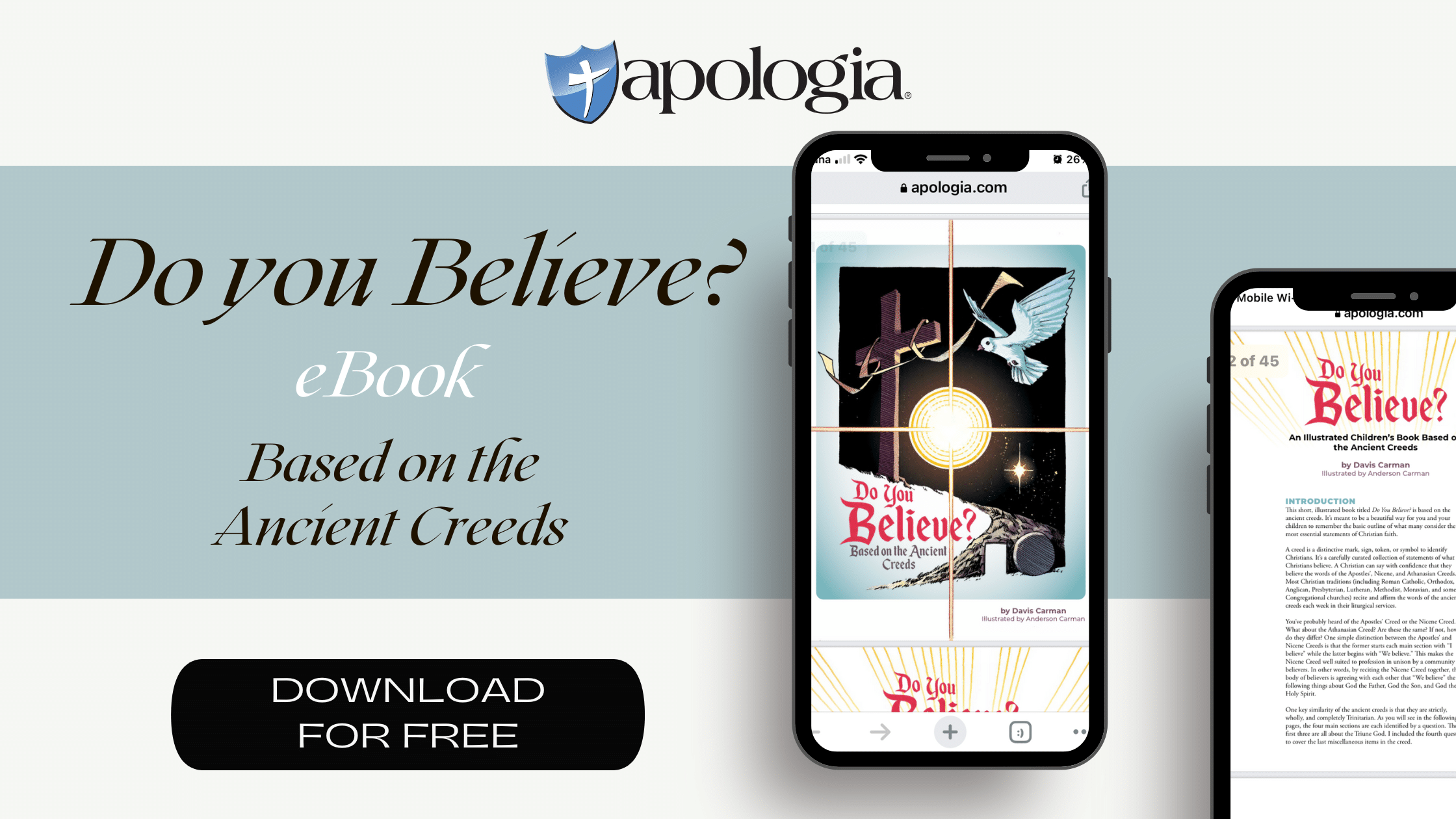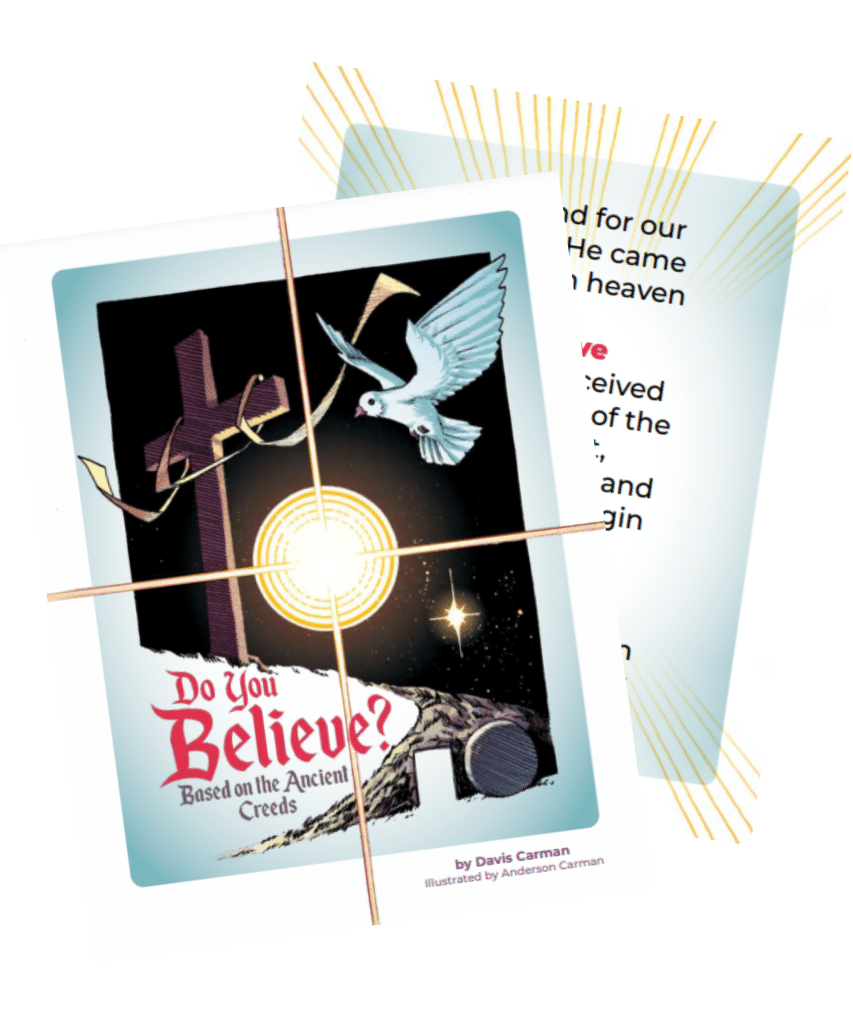
Do You Believe? Based on the Ancient Creeds
 This short, illustrated book titled “Do You Believe?” is based on the ancient creeds. It’s meant to be a beautiful way for you and your children to remember the basic outline of what many consider the most essential statements of the Christian faith.
This short, illustrated book titled “Do You Believe?” is based on the ancient creeds. It’s meant to be a beautiful way for you and your children to remember the basic outline of what many consider the most essential statements of the Christian faith.
Note for parents: The first half of this book contains the main text and colorful artwork. In the second half, you will find black-and-white line drawings of the illustrations. These line drawings can be used as coloring book pages for your children, with the goal of reinforcing what Christians believe.
What is a creed?
A creed is a distinctive mark, sign, token, or symbol to identify Christians. It’s a carefully curated collection of statements of what Christians believe. A Christian can say with confidence that they believe the words of the Apostles, Nicene, and Athanasian Creeds. Most Christian traditions (including Roman Catholic, Orthodox, Anglican, Presbyterian, Lutheran, Methodist, Moravian, and some Congregational churches) recite and affirm the words of the ancient creeds each week in their liturgical services.
You’ve probably heard of the Apostles’ Creed or the Nicene Creed. What about the Athanasian Creed? Are these the same? If not, how do they differ? One simple distinction between the Apostles’ and Nicene Creeds is that the former starts each main section with “I believe,” while the latter begins with “We believe.” This makes the Nicene Creed well suited to the profession in unison by a community of believers. In other words, by reciting the Nicene Creed together, the body of believers agree with each other that “We believe” the following things about God the Father, God the Son, and God the Holy Spirit.
What are the creeds?
One key similarity of the ancient creeds is that they are strictly, wholly, and completely Trinitarian. As you will see in the following pages, the four main sections are each identified by a question. The first three are all about the Triune God. I included the fourth question to cover the last miscellaneous items in the creed.
- Do you believe in God the Father?
- Do you believe in God the Son—Jesus Christ?
- Do you believe in God the Holy Spirit?
- What else do you believe?
History of the creeds
The Nicene Creed was first adopted in A.D. 325 to resolve the Arian controversy and was later amended in A.D. 381. The Apostles’ Creed was a baptismal confession that came much earlier, though not from the Apostles themselves. It contained much less detail and went through many versions before reaching the final form around A.D. 750.
Most of the Nicene Creed’s additional statements were included to refute specific errors by others. For example, the phrase “for us and for our salvation” was added to refute an error by Origen. The words “incarnate by the Holy Spirit” were included to counter a doctrine taught by the Manicheans. “He came down from heaven” was added to correct the teaching of Photius. And finally, “He was made man” was inserted to true-up an error by Nestorius. The lengthy Athanasian Creed surfaced in the fifth century, but not from a specific church council. It describes in much greater detail the relationship between Father, Son, and Holy Spirit. All three persons are one God and “consubstantial” with each other. That is, they are all of the same essence, of the same substance.
Let me make one final point about the creeds. The mention of two people is noteworthy: Mary and Pontius Pilate. Why are they included? Their mention serves to point out that the creed isn’t a theoretical document. Jesus Christ was a real person in real time whose birth, life, ministry, death, and resurrection are historical facts.
Do you believe?
Walking by faith,


